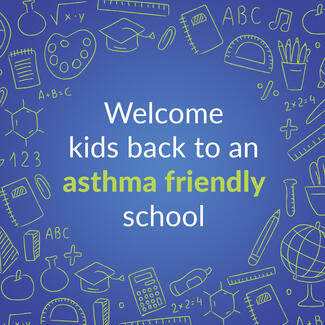
Vermont Asthma-friendly School Program
Becoming an asthma-friendly school is simple to do and benefits all students and staff—especially those who have been diagnosed with asthma. We know that most schools work hard to create safe and healthy learning environments – so why not get credit for your efforts and keep building on all the amazing work to make your school as asthma- friendly as possible?
Why is it Important?
Roughly 9,000 (1 in 12) of Vermont's children have asthma, and 61% of children with asthma have uncontrolled asthma. That means the potential for lots of missed school and workdays, and costly asthma-related emergencies. Many of the asthma-friendly strategies described below can help students and staff members with asthma avoid triggers, manage their symptoms, and successfully learn and thrive.

